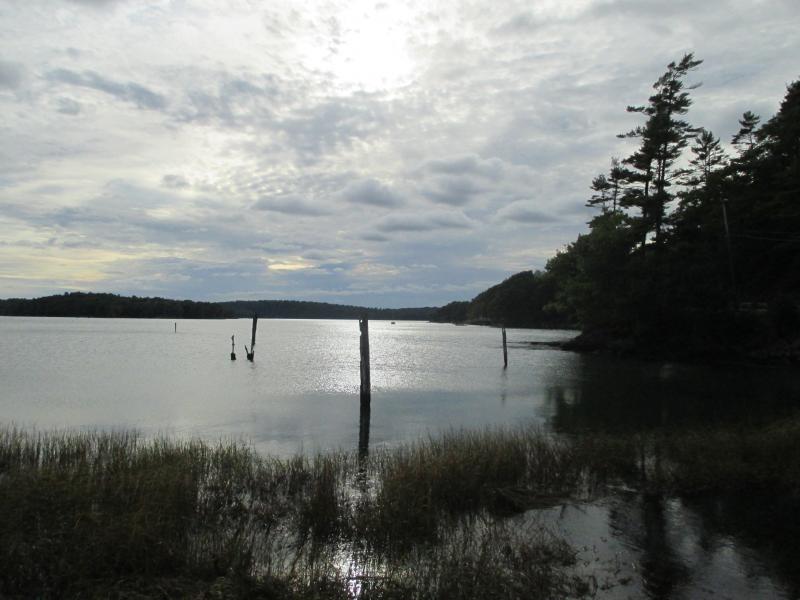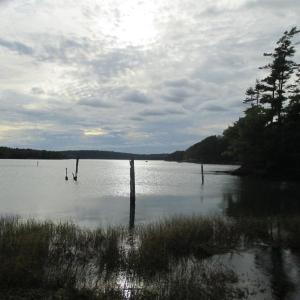Capt. Kidd’s pot of gold wasn’t at the rainbow’s end
People are always fascinated with pirate stories, and you don’t have to look far to find one pretty close to home. One concerns the legend of Captain Kidd and the treasure he's said to have buried in Edgecomb — but where?
Kidd, who's given name was William Kidd, was a Scotsman. He originally set sail from England in 1689 to search for pirates, but soon fell into bad company. He switched sides and became a buccaneer himself. As the story goes, after Captain Kidd grew weary of plundering the Caribbean, he sailed north and eventually found his way to a sheltered cove in the Sheepscot River. Here he laid anchor and sent his crew ashore to cut spars for his ship.
Following a brief and inglorious career, Capt. Kidd was captured in 1699 and taken to New York. He soon found himself clapped in irons and on his way to England to face justice from the Crown. Although he pleaded innocent, Capt. Kidd was tried, found guilty and condemned. On May 8, 1701, he was taken to His Majesty's Gallows and hanged by the neck until he was dead, dead, dead! His lifeless body was placed in a cage and hung in the harbor as a warning to all other pirates.
If Kidd ever buried any treasure on the Maine coast, the location of its whereabouts went with him to the grave. Or did it?
According to the legend, there are several places near Wiscasset where Capt. Kidd is said to have buried his ill-gotten loot. One of those was on “Folly Island,” an apt name given its supposed connection with Capt. Kidd. Now known as Davis Island, and a part of Edgecomb, it’s linked to Wiscasset by the Donald E. Davey Bridge.
In Kidd's time, the island was heavily wooded and completely surrounded by water. This was long before a town was established here; and when one was, it was initially given the name of “Freetown.”
The legend of Kidd’s treasure goes back to when Maine was still a domain. Rufus King Sewall, a 19th century Wiscasset statesman and historian, first wrote about it in the 1850s. Later, Fanny S. Chase added her own spin to the legend within her “History of Wiscasset in Pownalborough,” when she was doing her book research in the 1930s.
The story begins with the arrival of one the earliest settlers to the area, a man named Samuel Trask. Said to have been a seafaring man, Trask cleared a tract of land near the “Heights” on the eastern shore of the Sheepscot River where he built a log home. He had quite a colorful life of his own. As a boy, young Samuel was captured by the Penobscot Indians and carried north, far from his home in Salem, Massachusetts.
Trask grew up with the Natives, who taught him how hunt, fish, forage for food and everything else necessary to survive in the Maine wilds. Sometime later, his captors sold him to a wealthy Frenchman. His fortunes soon changed when he and his master were taken prisoner, this time by the English. Young Trask’s adventures were only beginning, for he soon fell in with the notorious Capt. William Kidd and his gang of pirates.
Before going any further, it should be noted that R.K. Sewall got the story from one of Trask’s sons who presumably heard it firsthand from his father. It was during one voyage that Kidd’s ship flying the skull ‘n’ crossbones made its way to the Maine coast.
Later in life, old man Trask claimed in all sincerity and sobriety that he’d been tasked with burying some of Kidd’s treasure on a small wooded island. As the legend goes, a pot of gold was buried on the east side of Folly Island near (or under) an eagle's nest.
Our narrator doesn’t explain why a pot was used and not a sea chest or strongbox. Maybe he had his pirate captain confused with a leprechaun. After Trask returned to the Sheepscot Valley, he’d either forgotten where the loot was buried, or someone else had beaten him to it.
There's just one problem with the story. One genealogical source puts Trask's birth in Salem at 1703; Kidd was hanged in 1701.
But hold on! Trask’s date of birth is a mystery, too. He claimed to have lived long enough to celebrate his 118th birthday! Maybe he found something better than gold: the Fountain of Youth.
Everyone seems to agree on one point, a Samuel Trask died in Edgecomb in 1789 and left behind a large family to carry on the story of Captain Kidd’s treasure. Although there’s been a lot of digging over the years, and even a dragging of the river bottom, no pot of gold has ever been found.
Before heading out with a pick and shovel to start your own search, keep in mind that Davis Island today is all privately-owned and shouldn’t be explored without permission of the property owner(s). Remember what happened to Captain Kidd!
Event Date
Address
United States
























